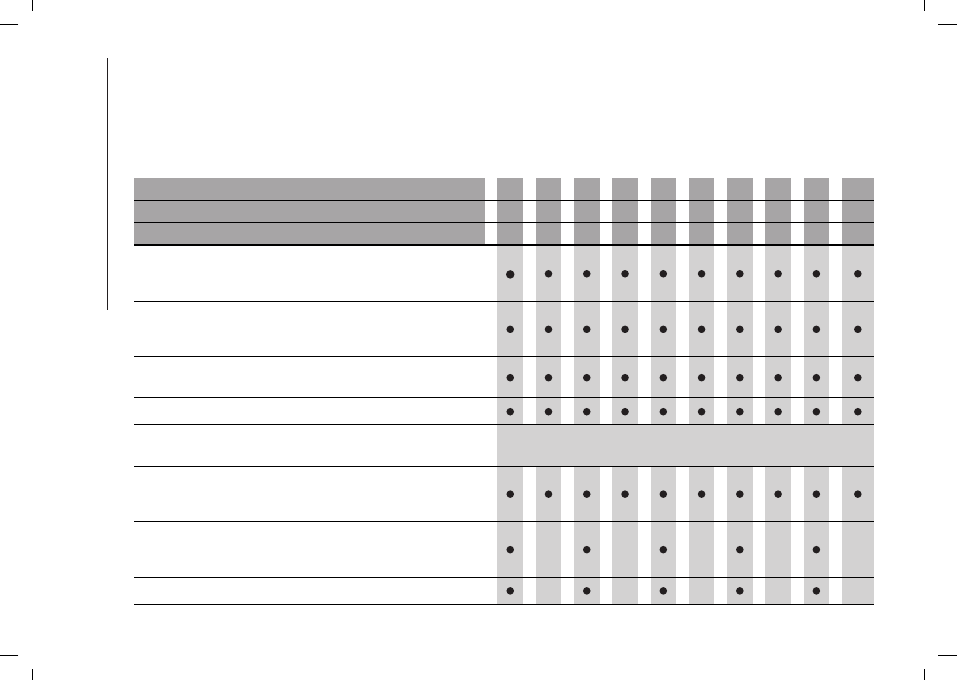Fiat 500L Living (2022 year). Manual in english - page 11

MAINTENANCE AND CARE
172
SCHEDULED SERVICING PLAN (Diesel versions)
WARNING Once you have carried out the last intervention in the table, continue with the scheduled servicing, maintaining the
frequency indicated in the plan by marking each operation with a dot or dedicated note.
Warning: simply restarting the maintenance from the start of the plan may cause the allowed interval to be exceeded for some
operations!
Thousands of miles
12
24
36
48
60
72
84
96
108
120
Thousands of kilometres
20
40
60
80
100
120
140
160
180
200
Years
1
2
3
4
5
6
7
8
9
10
Check tyre condition/wear and adjust pressure, if necessary; check
“Fix&Go Automatic” kit recharge expiry date (for versions/markets,
where provided)
Check operation of lighting system (headlights, direction indicators,
hazard warning lights, boot, passenger compartment, glove
compartment, instrument panel warning lights, etc.)
Check and, if necessary, top up fluid levels (engine coolant,
hydraulic clutch/brakes, windscreen washer, battery, etc.) (1)
Check exhaust emissions/smokiness
Check the AdBlue® (UREA) emission reduction additive level and
top up if necessary.
(1)
Use the diagnosis socket to check supply/engine management
systems operation, emissions and, for versions/markets, where
provided, engine oil degradation (5)
Visually inspect condition of: exterior bodywork, underbody
protection, pipes and hoses (exhaust, fuel system, brakes), rubber
elements (gaiters, sleeves, bushes, etc.)
Check windscreen/rear window wiper blade position/wear